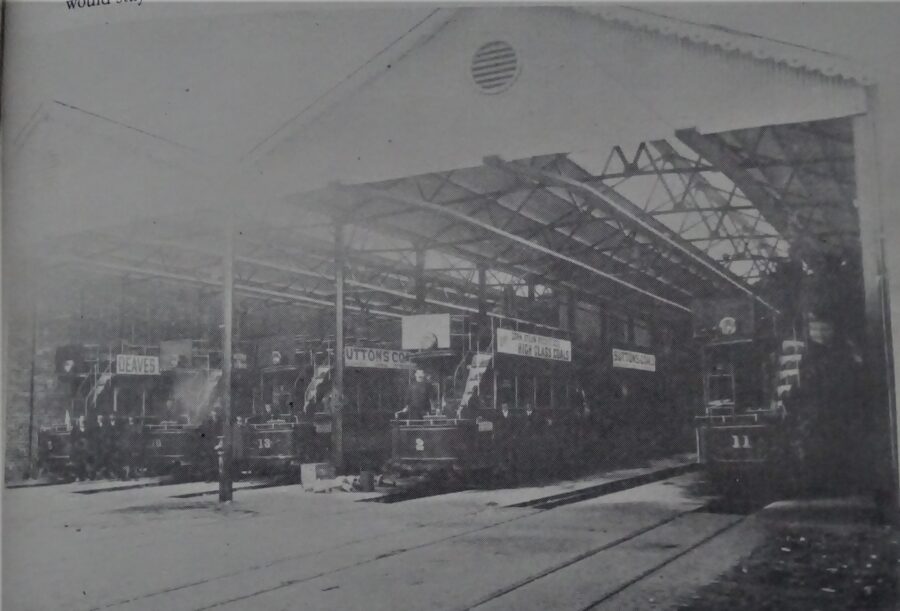
Kieran’s Our City, Our Town Article,
Cork Independent, 3 November 2022
Journeys to an Irish Free State: The Civic Guard Arrives
On 4 November 1922, about 7.40pm the entire city of Cork was plunged into darkness. Ten armed men Anti-Treaty IRA Volunteers with sledge hammers entered the Albert Road electricity power house, run by the Cork Electric Lighting and Tramway Company. They commanded the staff at the point of revolvers to enter a room, and there kept them prisoners, and immediately set about to reduce the plant to bits with sledge hammers.
The Cork Examiner records that the first immediate effect was that all electric current ceased, and the city was in darkness. The trams halted and shops that were still carrying on business continued with the aid of candle light, while others were more fortunate to have an auxiliary supply of gas. The city’s churches, where the Litany in honour of the saints of Ireland and special prayers for peace were being recited by large congregations, were also thrown into darkness. It being a Saturday night, there was the usually large numbers of people going to Confession, and in some of the churches the priests suspended the hearings.
Once the National Army troops arrived at the power plant, they freed the engineer and five other members of the staff who had been locked into one of the offices. The Cork Examiner reported on the quick response by the troops: “The Power House was probably only saved from complete destruction by the alertness of the military, who became suspicious when all the lights failed suddenly. It was realised, of course, such as failure might occur from ordinary causes, but it was fortunately worth investigating and two officers and four men rushed off to the Power House from Headquarters. They arrived just in time to prevent the total destruction of the plant…as soon as they entered the building the raiders made a hasty exit from the rear, their work unfinished, and indeed scarcely started”.
The engineering staff quickly got to work to remedy the damage done. The steam pump, and booster had been put out of action and the feeding tubes damaged. These were badly bent, but not broken. They were, however, rendered inoperative, and had the machinery been allowed to run for any time afterwards, an explosion would have taken place, bringing the centre building to ruins. Repairs were duly made. After 40 minutes the city was lit up once again, the trams were running, and everything was normal. Searches were carried out in the neighbourhood and several arrests on suspicion were made. All were subsequently released.
On 10 November 1922, between 7pm and 8pm, an attack was made on Victoria Military Barracks, Cork. Snipers opened fire on the buildings from the Blackpool side, and heavy firing continued for over twenty minutes. The troops replied to the attackers, who ceased fire altogether after about half an hour. The soldiers suffered no casualties.
About the same time, two civilians were wounded in Blackpool. It was not clear whether they were hit by stray bullets from the direction of the Barracks during the attack, or were hit during some firing in Blackpool, where a patrol carrying out searches were said to have been fired on.
The two civilians were standing near the corner of Messrs Murphy’s Brewery with others, and a military patrol a short distance away were carrying out searches. Suddenly shots rang out and one of the group of men was hit in the leg. They scattered, and a one armed ex-soldier named James Murphy ran for cover towards a doorway. He had just reached the house when he pitched forward gasping “I’m hit”. The ambulance was immediately sent for, and in it James Murphy was conveyed to the North Infirmary. The other man who had been shot had apparently gone home. He was not admitted to hospital.
In the midst of scuffles in the neighbourhoods of Cork, a party of the Civic Guard, numbering about sixty men, arrived in Cork on 9 November 1922 from Dublin to take up their police duties in the city and county. The Civic Guard (renamed the Garda Síochána na hÉireann on 8 August 1923) had earlier in 1922 been established by Michael Collins and the Irish Provisional Government. The first contingent of Civic Guards came to Cork by boat and were stationed in the Cork School of Music as the former RIC barracks at Union Quay had been burned by the Anti Treaty forces in the wake of its evacuation. It was intended to send some of the members of the Civic Guard to Bandon, Clonakilty Midleton, and Youghal.
The editorial in the Cork Examiner wrote about the need for citizen co-operation with the Civic Guard: “A sense of civic responsibility will, it may be assumed, urge all classes to co-operate with the Civic Guard and on all occasions to give its members every assistance possible.…The creation of the Civic Guard is a direct result of Irish liberty, and it is for the people to prove that they appreciate that freedom by cordially upholding the body that has been brought into being to maintain the peace and to ensure that order and honesty are fundamental parts of the society to which we all belong, and which it is everyone’s duty as worthy citizens to uphold”.
Caption:
1175a. Interior view of Albert Road electricity power house with some electric trams worked by the Cork Electric Lighting and Tramway Company (source: Tram Tracks of Cork by Walter McGrath).